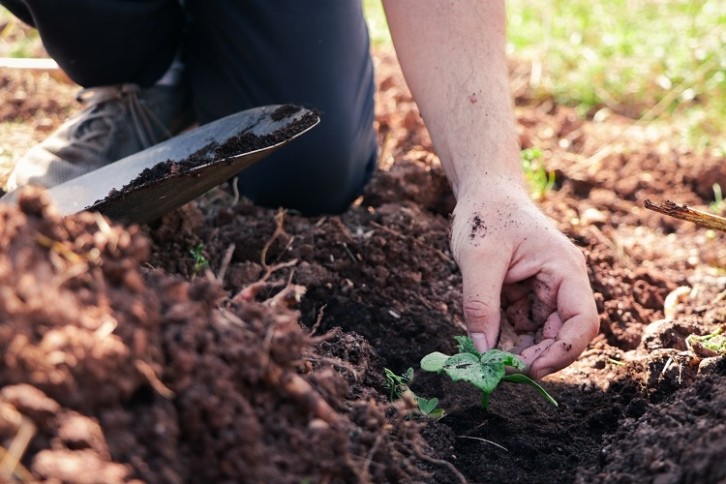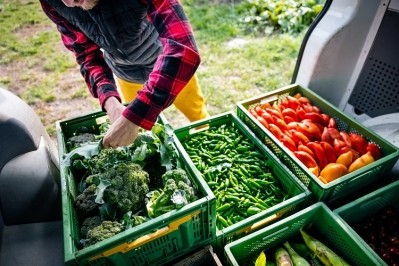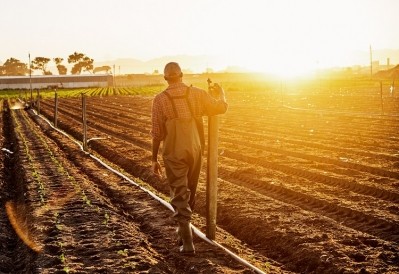Who funds regenerative agriculture?

As food industry stakeholders look for ways to improve their sustainability credentials, a number of new production methods and types have been developed, from cultivated meat to edible packaging. One of the keys to making the food industry more sustainable is addressing agriculture, which, with its links to deforestation and the environmental affects of cattle rearing, is a prominent part of the food industry’s links to climate change.
Regenerative agriculture is a key part of this. Aiming to regenerate soil and landscape rather than simply protecting it, regenerative agriculture is growing in popularity among industry.
However, as with all things new, it must make a business case for itself. Without a strong infrastructure already in place, it must build itself up to a point where it can move into the space currently taken up by traditional agriculture.
This is easier said than done. Whilst funding initiatives are in place, regenerative agriculture poses a risky proposition for many businesses.
How regenerative agriculture is being funded
On an EU level, funding is possible, especially when working in collaboration with the private sector.
For example, EIT Food, the food part of Europe’s Institute of Innovation and Technology, recently launched its regenerative innovation portfolio, aiming to help companies scale up regenerative agriculture practices through funding.
€15m will be invested into the portfolio by EIT, matched by its corporate partners, and it will focus on five European landscapes. EIT will then match corporate contributions of €5m a year for three years, bringing up the total investment into the programme to €30m.
Activities that generate a return will be invested back into the portfolio. The money will not only be used to regenerate the landscape, but also to help participants with applications for external funding, including from government grants, public and private investment, and VC and angel investment.

Such a large initiative, which will involve many companies, could have a significant impact on regenerative agriculture. The funding will be used to upscale a range of regenerative agriculture initiatives.
“We want to move the responsibility and risk of transitioning to regenerative agricultural practices from individual farmers towards a landscape transition in which actors along the value chain collaborate and facilitate the farmer to transition to regenerative agriculture,” EIT told us.
“To do this we need the key stakeholders in that landscape working together, including farmers, the companies that source products from that landscape, the banks that support the farmers and other actors in the supply chain.
"We need the key stakeholders in that landscape working together, including farmers, the companies that source products from that landscape, the banks that support the farmers and other actors in the supply chain."
“To facilitate this, for every landscape a local landscape coordinator, that understands the local (business) ecosystem, dynamics and socio-cultural aspects within the region, will be appointed to engage with and orchestrate collaboration between a diverse group of stakeholders.”
The scale is a vital part of the initiative, EIT told us. Without the scale, there is no showing stakeholders that there can be a business case for regenerative agriculture; there is no showing them that it can fight food insecurity; there is no showing them that it can mitigate the effects of climate change and pollution, and improve biodiversity and soil health. Scale, in a word, matters.
Regenerating together
In September last year, the Sustainable Agriculture Initiative (SAI), a group of companies that includes majors such as Danone, Nestlé, PepsiCo and Unilever, released the ‘regenerating together’ framework, which outlined its main principles on regenerative agriculture.
Included in this was a definition: “SAI Platform defines regenerative agriculture as an outcome-based farming approach that protects and improves soil health, biodiversity, climate, and water resources while supporting farming business development,” SAI told FoodNavigator at the time.
Farmers are central to this process. Upskilling farmers will enable more regenerative agriculture projects to thrive, and cement regenerative methods as a part of agricultural practices.
“The Portfolio is focussed around demonstrating how actors within a region can work together to develop a viable transition towards regenerative agriculture. The Portfolio will upskill, train and support a core group of farmers within the region. This will involve a range of organisations working . . . to test solutions, from insurance companies and banks to startups and innovators working with farmers, cooperatives and offtakers.” An offtaker is someone who has signed a contract agreeing to buy a portion of a producer’s upcoming goods.
EIT is leading the programme in collaboration with the non-profit FoodValley, which aims to keep track of developments. “We will use an approach for baseline measurements and monitoring measurements, so we can monitor the developments,” the organisation told FoodNavigator. “We aim to contribute in practice and accelerate the sustainable ambitions that various Portfolio partners have set.”
The initiative, it stressed, “aims to demonstrate pathways in various regions to show how cross sectoral and cross value chain collaboration can facilitate farm to fork transition.”
Derisking regenerative agriculture
Despite significant investment from organisations such as EIT, many corporates are reluctant to stick their toe into the world of regenerative agriculture, as the business case remains uncertain. The problem of upscaling regenerative systems is a complex one, Steven Lang, managing director from the climate change investment firm Pollination, told FoodNavigator.
To persuade investors to put money into regenerative agriculture, Lang told us, he would say to them: “You’re investing in a system which is founded on robust and strengthening natural capital, which underpins all agricultural productivity; and you're investing in the social and human capital that is the unit of production.
An outcomes-based approach
The organisation Regen10 last year released an outcomes-based framework for regenerative agriculture. There are many methods to regenerate the landscape, Regen10’s Theodora Ewer told us at the time, so regenerative agriculture should focus on what it can do rather than how it does it.
The framework aims to create a regenerative system with input not just from academia, business and civil society, but from indigenous people and farmers as well.
“So in terms of risk mitigation for investors: strong natural capital, strong social capital and relationships.” Furthermore, the fear of a yield drop in regenerative agriculture, he suggested, is overstated, and in some programmes, such as in India, yields even went up from using a regenerative system.
However, investors are cautious, and must be persuaded before they put their money into risky propositions like new farming methods. This is where blended finance comes in. Blended finance is when organisations put some money into an industry or practice, such as regenerative agriculture, that could be considered risky, in order to derisk it and encourage private sector investors to provide the rest.
“There's a massive gap,” between the private sector on the one hand, and NGOs on the other, Lang told us. “At the moment you have philanthropy ploughing its own furrow, sprinkling philanthropic dollars across lots of pilot projects; you've got development finance that's doing the same, that haven't really committed at the billion-dollar level which they really need to; and then you've got private sector and they're doing their own thing in their own supply chains.”

Blended finance is vital to get the private sector into a position where they feel they can invest, Lang told us. “I would argue that we can't and we won't deliver the transition to regenerative without a major central role for blended finance facilities, because the private sector is showing interest in deploying capital but it will typically say ‘we can't find enough bankable projects, particularly in emerging markets’.
"I would argue that we can't and we won't deliver the transition to regenerative without a major central role for blended finance facilities, because the private sector is showing interest in deploying capital but it will typically say ‘we can't find enough bankable projects, particularly in emerging markets’."
“They will also say that investing in some of these countries is just too risky, and it's really difficult to get money to large numbers of smallholders. So you've got fragmentation risk, you've got country risk, you've got project risk; so even though there's a wall of money building on the private sector side, it's not yet being deployed or committed because it needs to be de-risked.
“The only way that you can really de-risk it is a major intervention from climate finance and philanthropy, with the focus of that investment also including capacity building for local institutions, strengthening farmers and organisation, basically taking away all of the layers of risk that the private sector needs to get sufficiently comfortable to participate in a blended facility.”
Defining regenerative agriculture across broad programmes
Regenerative agriculture does not have a legal definition. While several frameworks have been drawn up, this does not mean the same as a definition enshrined in law. A report by the Food and Land Use Coalition (FOLU) last year suggested this could lead to greenwashing.
How will EIT’s initiative work with corporates to implement regenerative agriculture practices without a definition to guide them?
“During the development process of the regenerative innovation portfolio we have discussed and aligned with several organisations that are developing frameworks for regenerative agriculture, think about OP2B) and Regen10 for example,” EIT told us.
“The Regenerative Innovation Portfolio will continue to align with these organisations and may become an implementation partner of these organisations, putting the frameworks into practice (the Portfolio will thus focus on practice, not on defining metrics).”
However, there is no one definition or framework that the initiative will use. “This might also vary between landscapes. We will work with farmers to understand the most appropriate practices for them to trial, carry out baseline data collection, implement practices and monitor their impact.”
In the industry in general, the lack of a legal definition is ‘a huge potential barrier’, Pollination’s Lang told us. Not only are there different definitions, he told us, but ‘a plethora of terms’ for similar practices across countries, with labels such as agroecology, climate smart and natural farming being used for practices bearing similarities to those described as ‘regenerative agriculture’ around the world. This makes upscaling internationally even more difficult.
The outcomes-based approach, such as that posed by Regen10, could be the answer, he suggested. “This family of practices, or this family of methods, are all ultimately trying to achieve better outcomes on soil, carbon, nature, farmer livelihoods, biodiversity, nutrient density. So it's a question of what you put in that basket of outcomes. I think the outcome-based approach is the way that we will overcome the potential barrier of lacking a definition.
“The key is for countries to write it into their national priorities and plans and start adopting the same outcome-based framework, so I think outcome-based framework is key rather than the definition itself.”
One of the organisations that is working to de-risk regenerative agriculture is the Global Environment Facility, or GEF (pronounced ‘Jeff’). GEF, it told FoodNavigator, usually develops blended finance schemes with fund managers and multilateral development banks, with agencies as a go-between.
From fund managers, it usually receives proposals which have the need for ‘patient capital’ (capital to be invested long-term), or in the form of lenders who wish to invest in regenerative agriculture asking them to help reduce the risk.
“What we do is provide a type of financial instrument to bridge that gap on what makes something not commercial to being commercially viable,” Avril Benchimol-Dominguez, senior financial specialist at the GEF, told FoodNavigator.
Sustainable and regenerative agriculture do not necessarily have any additional cash flow, as it’s essentially just changing farming practices, which can increase yield but doesn’t always. Thus, where the GEF comes in is giving investors a grace period where the part of the project with no returns is taking place.
“We fund the fund managers to have a whole period in which we're not expecting any type of return; we just stay there and fund those types of regenerative (activities) or changes in behaviour at the farm level,” Benchimol-Dominguez told us. It is much the same for development banks.

Regenerative agriculture is risky because, she told us, “it’s asking a farmer to move away from an existing track record and a given productivity of the soil to switch practices.” This, firstly, requires a significant trust in the farmers – that they will be both able and willing to shift their practices – as well as a period of five or six years where no revenue will come in at all.
On top of this, the agricultural sector itself is risky as it is, added Peter Mbanda Umunay, senior environment specialist at the GEF. Climatic conditions such as drought and flood make the sector inherently unstable.
Nevertheless, he went on, the private sector is interested in using the GEF money to scale up regenerative agriculture practices. “It’s getting more traction, many many companies and private entities are coming to us with different projects, and it happens to be quite often linked to agriculture and regenerative agriculture,” he told us.
While many multinationals are still focused on sustainable agriculture, interest in regenerative is growing, albeit mainly in developed countries. The focus is on developed economies, Benchimol-Dominguez told us, is that it there is less risk.
“You hear now that . . . the value of the land is bigger if you do regenerative agriculture than if you didn’t,” she told us. While up until now, the focus was on yield, now key private sector players are beginning to realise that investing in regenerative agriculture could make land more valuable. “Then if you want to sell it, it will be sold by a higher amount.”
























